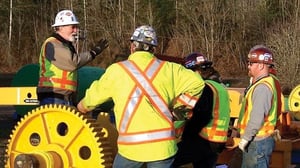We all know the weathered adage, “What came first the chicken or the egg?” In the crane and rigging industry people often ask the same question in regards to training.
Do companies invest in training because OSHA, or some governing body mandates it, or would they invest in training irrespective of mandates and certification requirements? Or how about this – is it because companies have invested in training for so many years, that the government finally decides to catch up and simply mandate it?
In the US, let’s imagine the answer falls somewhere in between – the chicken and the egg showed up at the same time!
Prior to OSHA and ASME ever requiring mobile crane operator certification, basic rigger/signalperson certification, or advanced rigger certification, world-leading companies felt it necessary to invest in crane and rigging training to build a stronger, more efficient and skilled workforce.
However, it is obvious that the training industry has picked up a lot of steam in the past decade due to higher regulation and certification mandated by law.
An altruism I can wrap my head around is: there is nothing new under the sun. To me this means, if it has happened once, it will probably happen many times again.
That being said, the developing world currently lacks federal mandates for worker competency, much like the US did just a few years ago. However, we know that world-class companies out there realize the need for investing in training – because one of the elements that gives them an edge over their competition.
And obviously, once worker competency and certification is mandated by law, other companies will be forced to begin training their employees.
Now that we have that solved, let's finally figure out that chicken or egg bit.




COMMENTS